AMD Ryzen 7000 delivers on Zen 4's promise to outperform Intel
AMD is gunning for Intel's unannounced 13th Gen processors
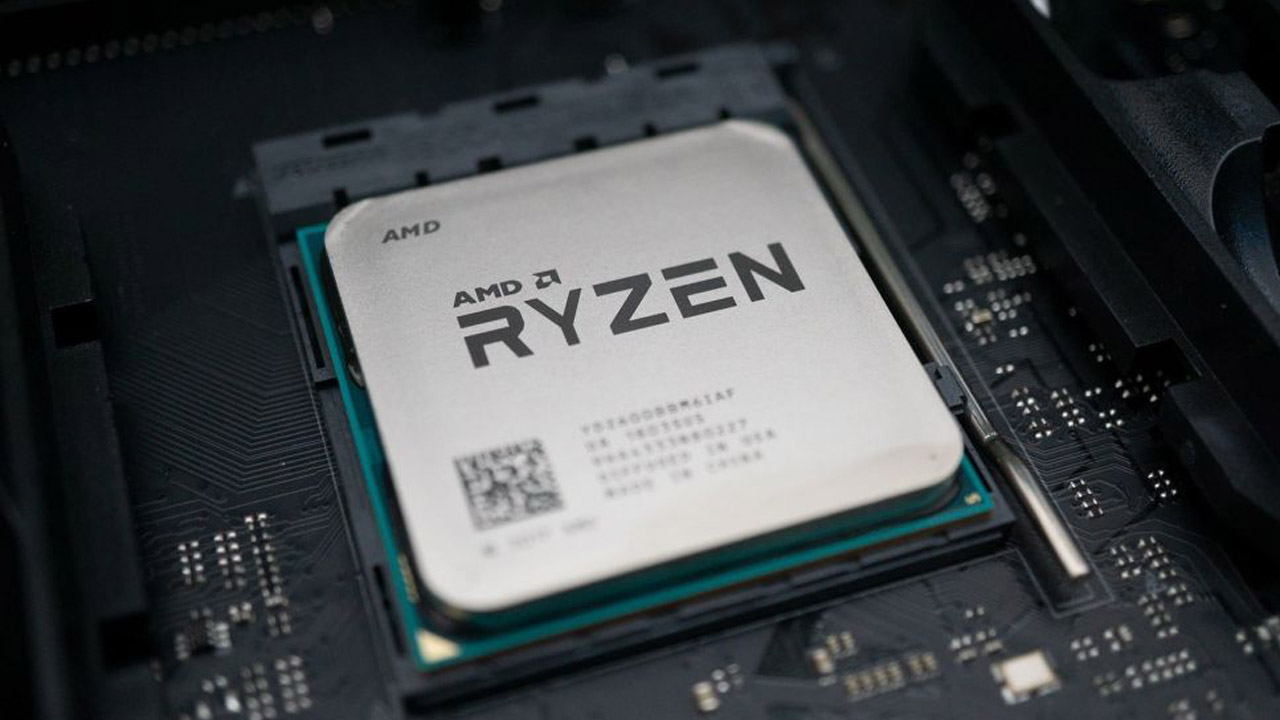
What you need to know
- AMD's Ryzen 7000 is centered around performance and efficiency.
- The chipset will be based on AMD's new 5nm Zen 4 architecture and will utilize the new AM5 socket design.
- Compared to Intel's Core i9-12900K, AMD claimed 11% faster single thread performance, 44% faster multi-thread performance, and 47% more performance per watt with the new Zen 4 architecture that powers Ryzen 7000 processors.
- The flagship Ryzen 7000 series processor is the Ryzen 9 7950X, which AMD compared competitively against rival Intel's 12th Gen Core i9-12900K.
- Zen 4 will be all about DDR5 memory, as there is no more DDR4 support, as well as PCIe 5.0
- AMD will support AM5 through at least 2025.
- The Ryzen 7000 family will include multiple chip models targeting different levels of performance at different price points.
- Ryzen 7000 will start at $299 and all chips will launch on September 27.
- AMD claimed it was on schedule for the next-gen Zen 5 architecture for a 2024 launch.
AMD took the wraps off of its highly anticipated Ryzen 7000 processors at the "Together We Advance PCs" special event from Austin, TX, with company CEO Dr. Lisa Su headlining the announcement. According to the chip-maker, the Ryzen 7000 processors will succeed AMD’s current Ryzen 6000 family, which will usher in “a new era of performance for gamers, enthusiasts, and content creators,” new architecture based on AMD's Zen 4 platform. The Ryzen 7000 chip series will compete later this year against rival Intel’s forthcoming 13th Gen processors, codenamed Raptor Lake. The flagship 7000 series AMD processor is the Ryzen 9 7950X.
"At AMD, we're all about high performance and adaptive computing," Su said, noting that the company wants to create products that help solve the world's most challenging problems. The company will introduce four new architectures to the market over the next several quarters, including new RDNA for graphics, Zen 4C, and an XDNA next-gen SoC.
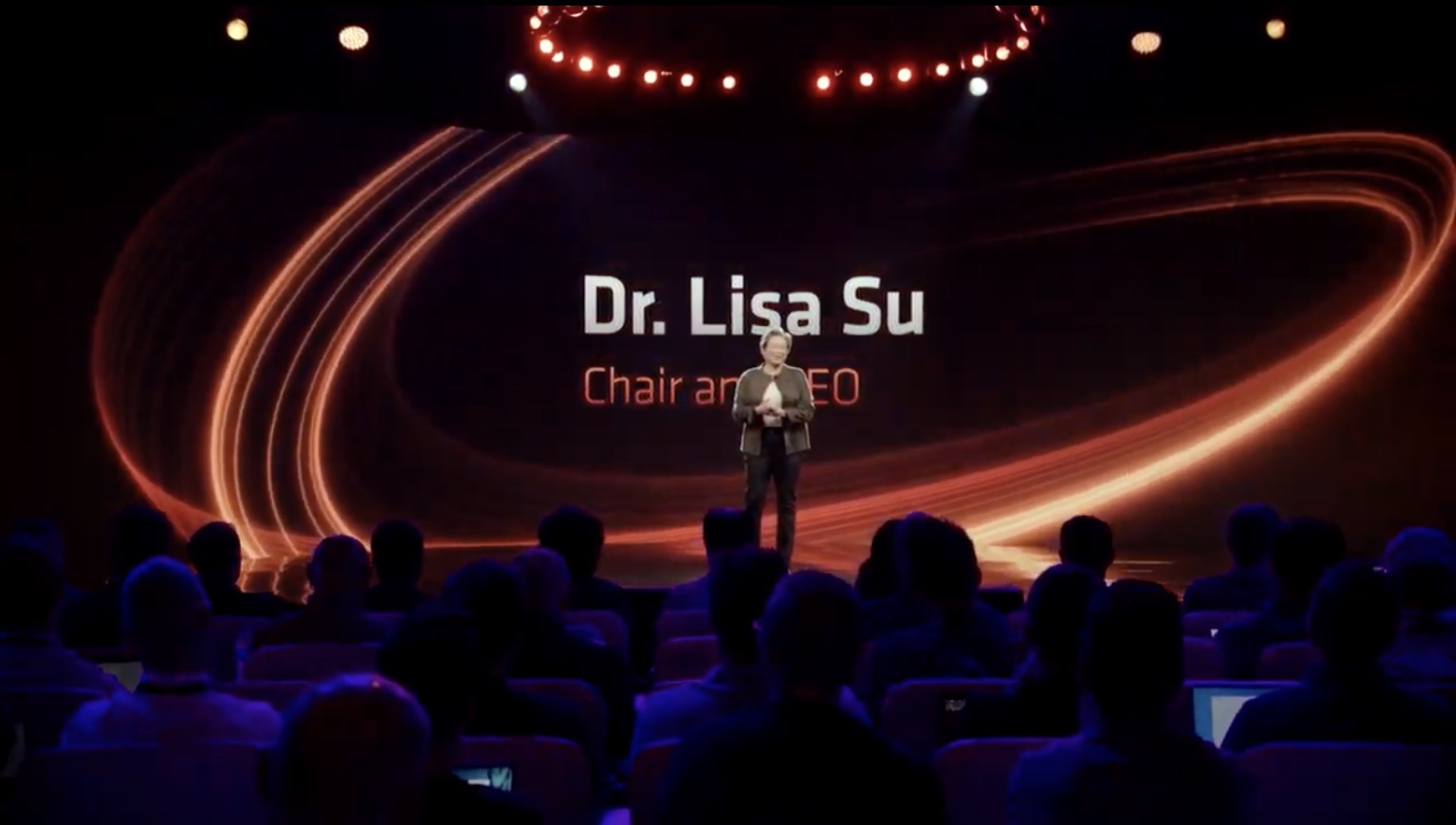
"At AMD, we love the PC, and we especially love all of the PC gamers and enthusiasts," she added, announcing the new Zen 4-powered Ryzen 7000 platform. "Today is all about the next-generation Ryzen processors."
The company's goal with the Ryzen 7000 series is to push the performance boundaries with efficiency. AMD stated that it focused on a new core design that combines leadership performance and leading energy efficiency.
The Ryzen 7000 is the first 5nm desktop CPU, and it will use the new AM5 socket that supports DDR5 and PCIe 5.0.
When AMD set out to create Zen 4, it had only expected a 10% IPC boost compared to Zen 3, but careful tweaks and optimizations resulted in a larger 13% performance boost compared to Zen 3. The new processor also achieves a faster 5.7GHz clock speed, which is 800MHz higher than Ryzen 5000. All this leads to a 29% single-thread performance gain compared to the 5000 series.
Ryzen 9 7950X
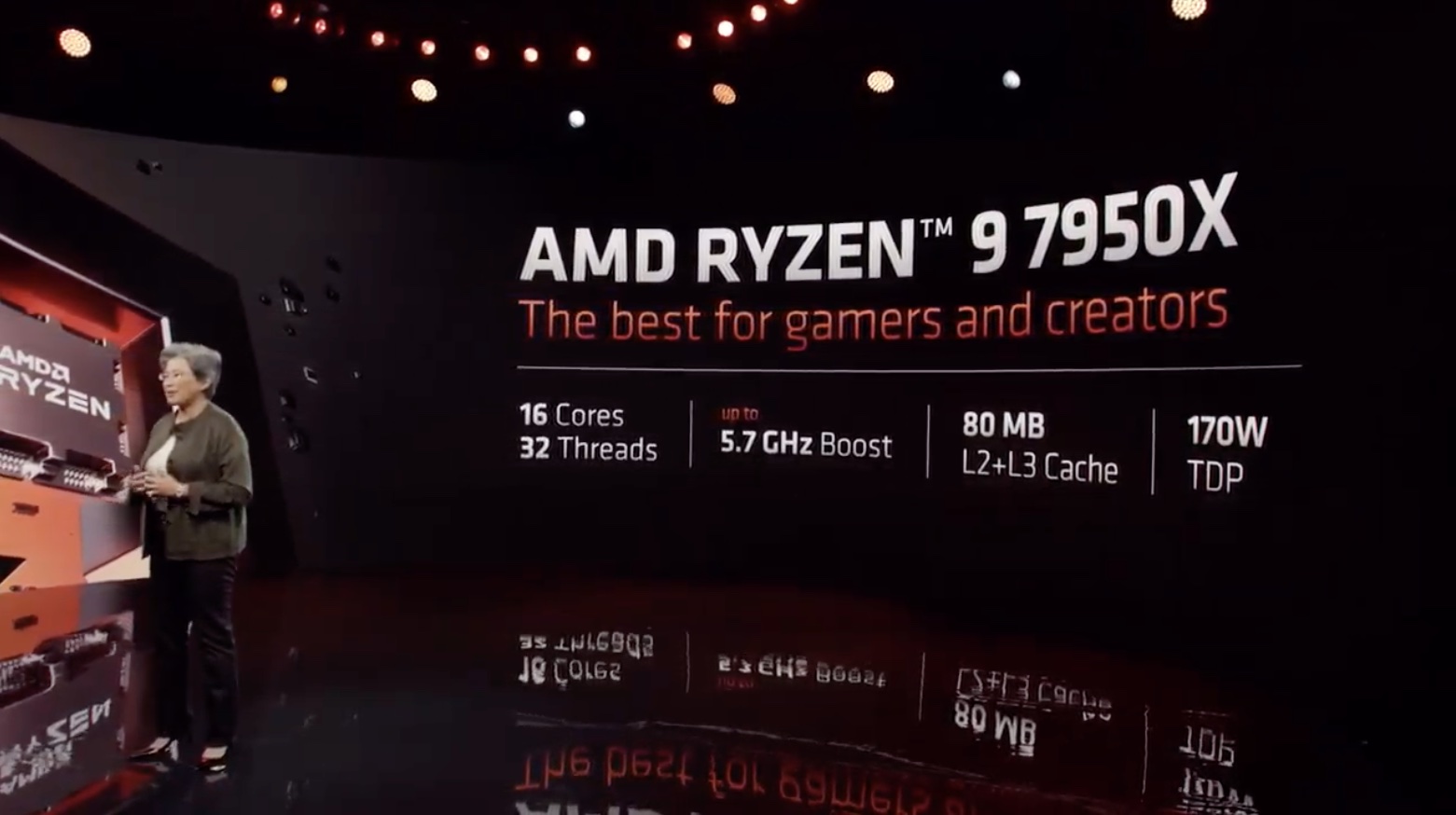
The flagship Ryzen 9 7950X is "simply the best" CPU for gaming and content creation, AMD boasted.
Get the Windows Central Newsletter
All the latest news, reviews, and guides for Windows and Xbox diehards.
"We have 16 cores, 32 threads, up to 5.7 gigahertz boost, an 80-megabyte cache, and 170 watt TDP envelope," Su detailed.
Compared to the Ryzen 5950X, the 7950X delivers 15% more performance across popular games at 1080p, AMD revealed. Content creation performance has been boosted by 40% compared to the 5950X, and AMD proclaimed that "the 7950X is the fastest CPU in the world."
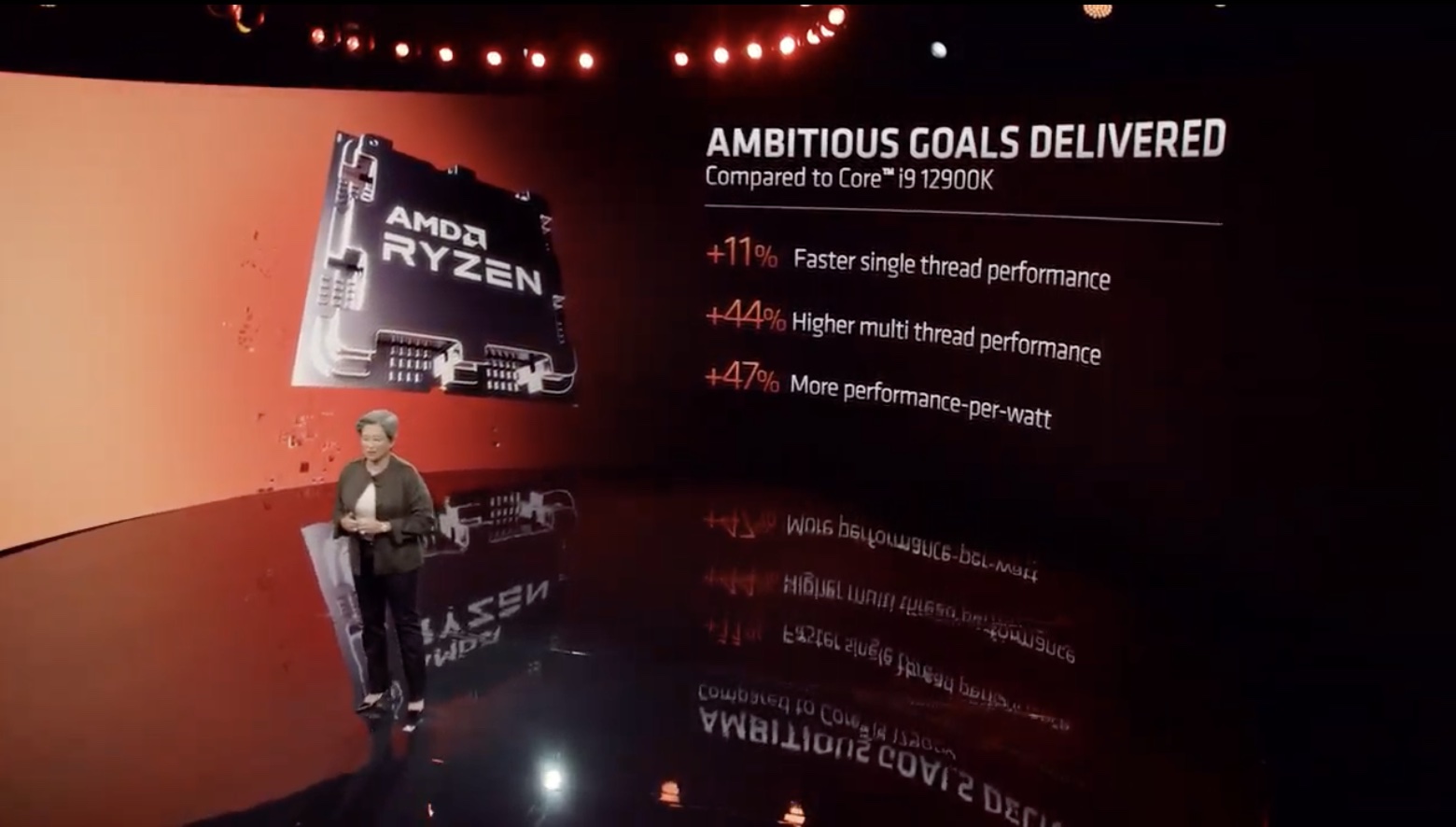
The flagship Ryzen 7000 chipset delivers up to 62% more compute performance for content creators. Compared to Intel's Core i9-12900K 12th Gen CPU, AMD claimed that the Ryzen 9 7950X delivers 62% higher performance but achieves this at 47% better performance-per-watt, leading to more energy efficiency.
Additionally, Ryzen 7970X delivers 11% faster single thread performance and more than 44% faster multi thread performance compared to its Intel 12th Gen rival.
The company is also adding to the Ryzen 7000 series across all price points with three additional chips.
More models in the Ryzen 7000 family
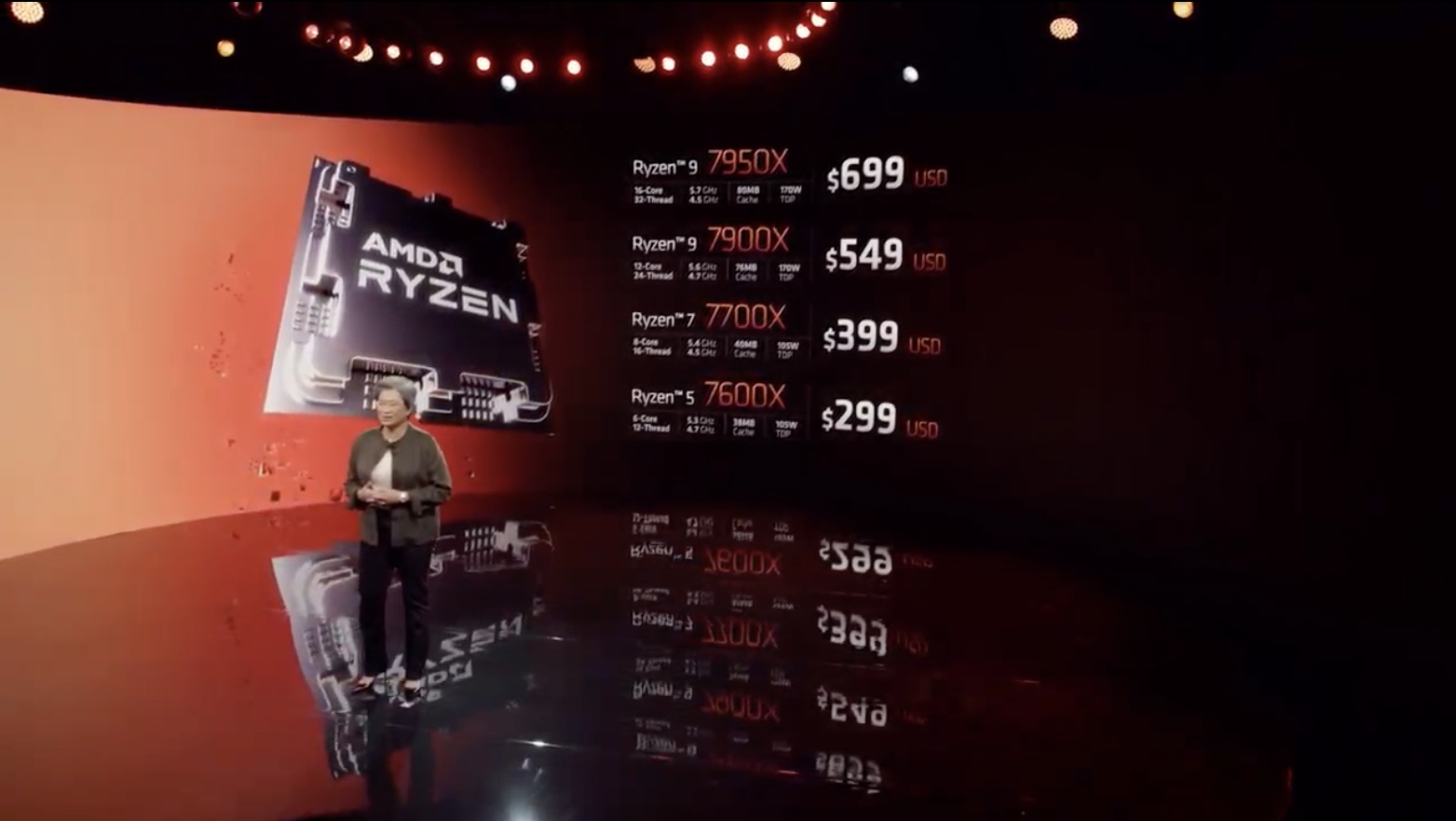
There will be three additional Ryzen processor models in the 7000 family, AMD said, including the mainstream Ryzen 7600X. Compared to the Intel 12th Gen Core i9-12900K processor, AMD released its own performance benchmark that showed the 7600X achieving constantly higher frame rates.
The Ryzen 5 7600X processor comes with six cores and 12 threads.
AMD's mainstream Ryzen 5 7600X is said to deliver up to 11% faster performance improvements compared to the Core i9-12900K.
"Now if you look across a broader set of games, the mainstream 7600X delivers on average 5% faster gaming performance," Su quipped.
The 7600X starts at $299.
Other members of the Ryzen 7000 family include the 12-core, 24 thread Ryzen 9 7900X, priced at $549, and the eight-core, 16 thread Ryzen 7 7700X processor, priced at $399. The flagship 7950X is priced at $699.
Powered by Zen 4
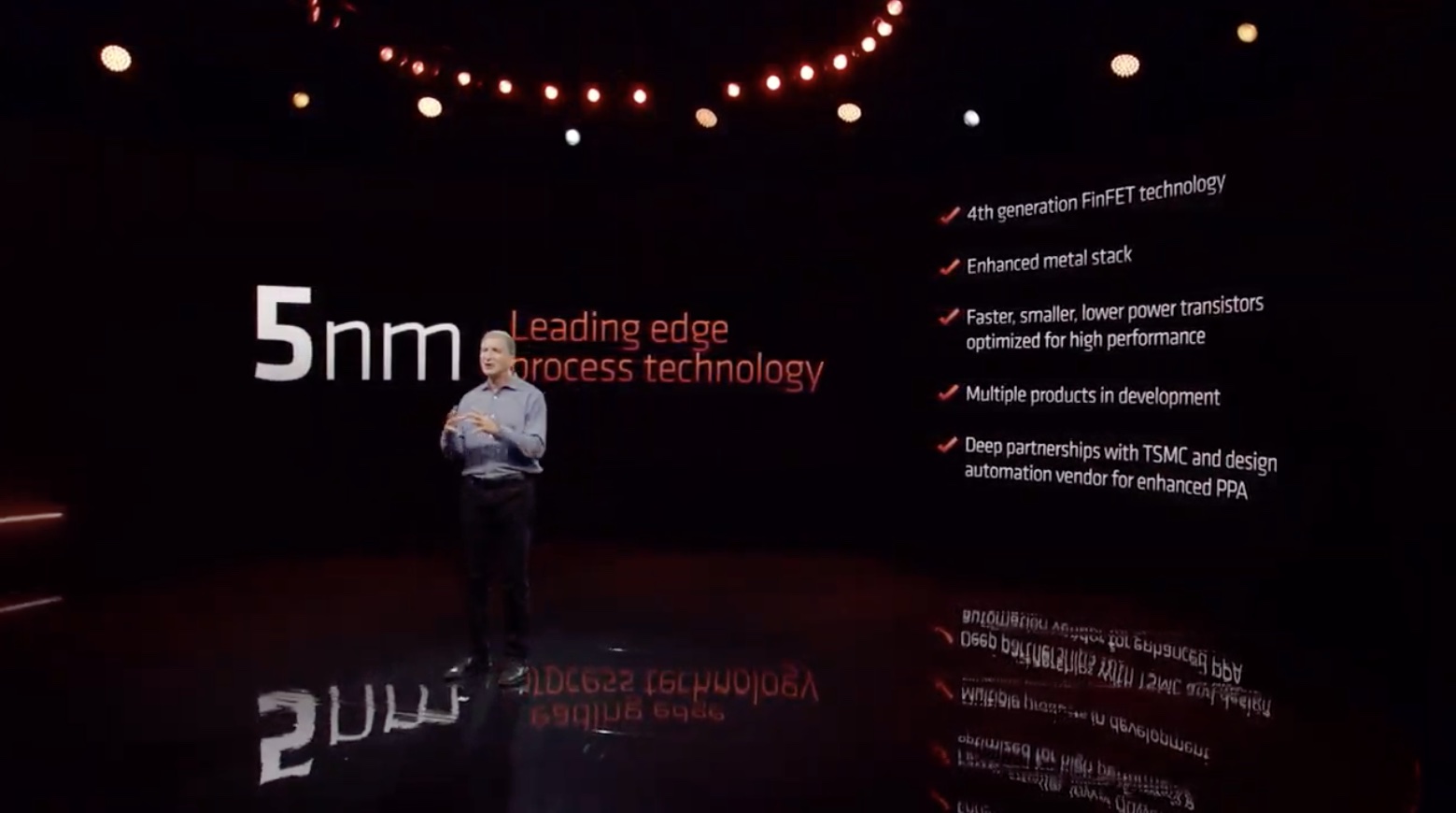
"Zen 4 continues our tradition of new CPU performance that delivers high performance right on schedule," AMD CTO Mark Papermaster said in introducing the new architecture that powers the Ryzen 7000 series.
"We have several architecture and technology improvements compared to Zen 3," Papermaster added. "I'm pleased to share the Zen 4 brings a significant instruction per clock uplift of 13%. We've added a new front-end design to better feed our execution pipes for machine learning and high computation workloads. We have expanded our x86 instruction support to include a AVX-512 And lastly, we leveraged the most cutting-edge process node along with AMD design efficiencies to bring these significant performance and energy efficiency gains."
The 13% uplift is calculated using a geomean looking across 22 representative workloads, including gaming and content creation benchmarks. AMD also noted that Zen 4 is a derivative of Zen 3. With Zen 3, AMD increased the execution width, and with Zen 4, the improvements come from the front-end and branch predictions, increasing the capability of more instructions per cycle. Since the first Zen launched, Zen 4 has delivered a 235% IPC gain, Papermaster exclaimed.
With AVX-512, there is a 1.3x improvement of 32-bit precision floating point inferencing operation compared to Zen 3. There is a 2.5x of VNNI improvement, which leads to faster imaging processing and natural language performance.
Zen 4 is based on a 5nm node using an enhanced metal stack, 4th gen FinFET technology, and a reduction in the die area by 18% despite adding more features. A 15-layer metal stack has also been co-optimized to deliver high-frequency and high-density routing capability.
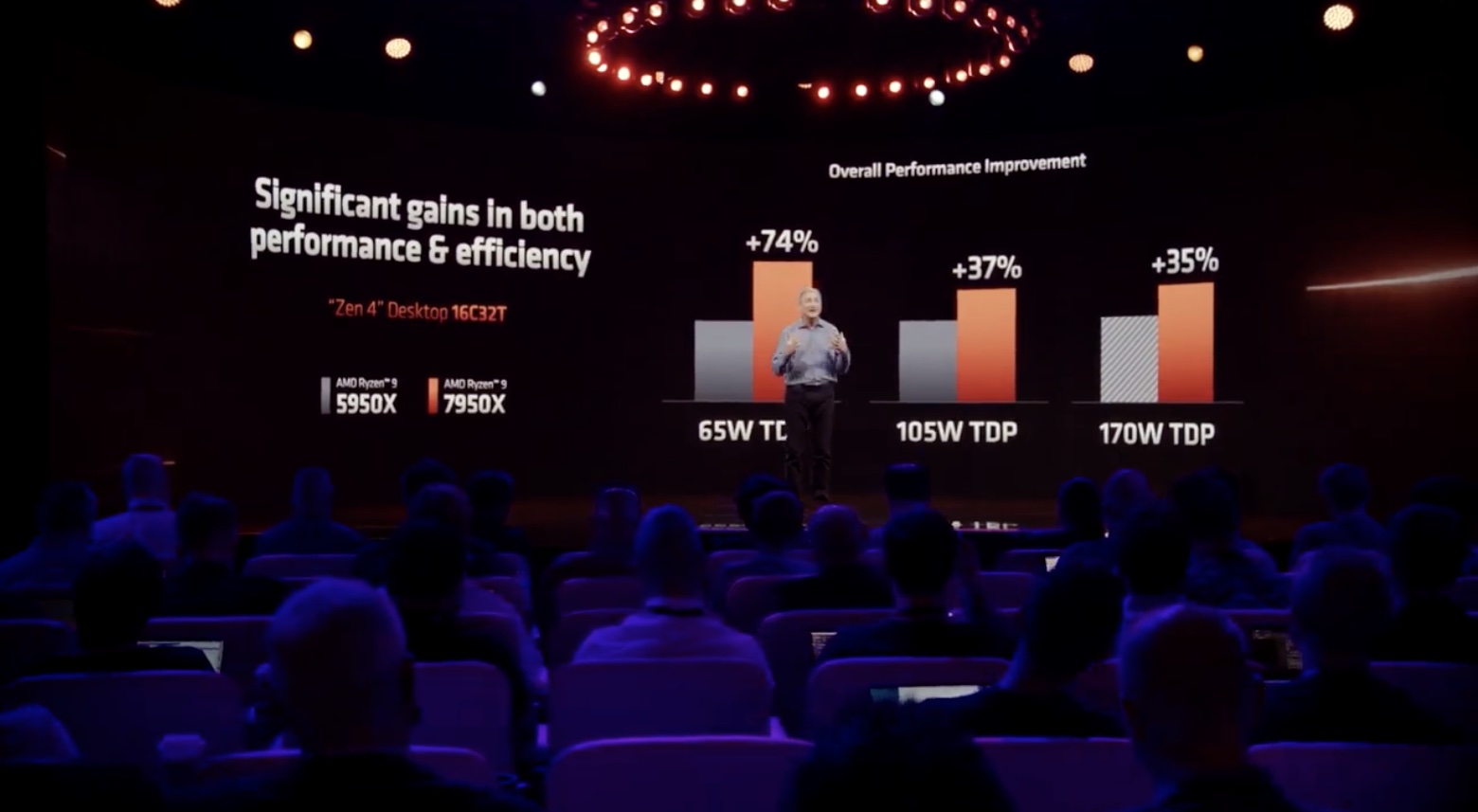
"The partnership around design and process delivers leadership efficiency for Zen 4," Papermaster said, leading to 62% lower power or 49% more performance compared to Zen 3. "AMD is committed to high performance with sustainability, reducing the environmental impact of our HPC processors."
The company claimed it had furthered its advantage against Intel, noting that Zen 4 is 50% smaller than the competition and 47% more energy efficient.
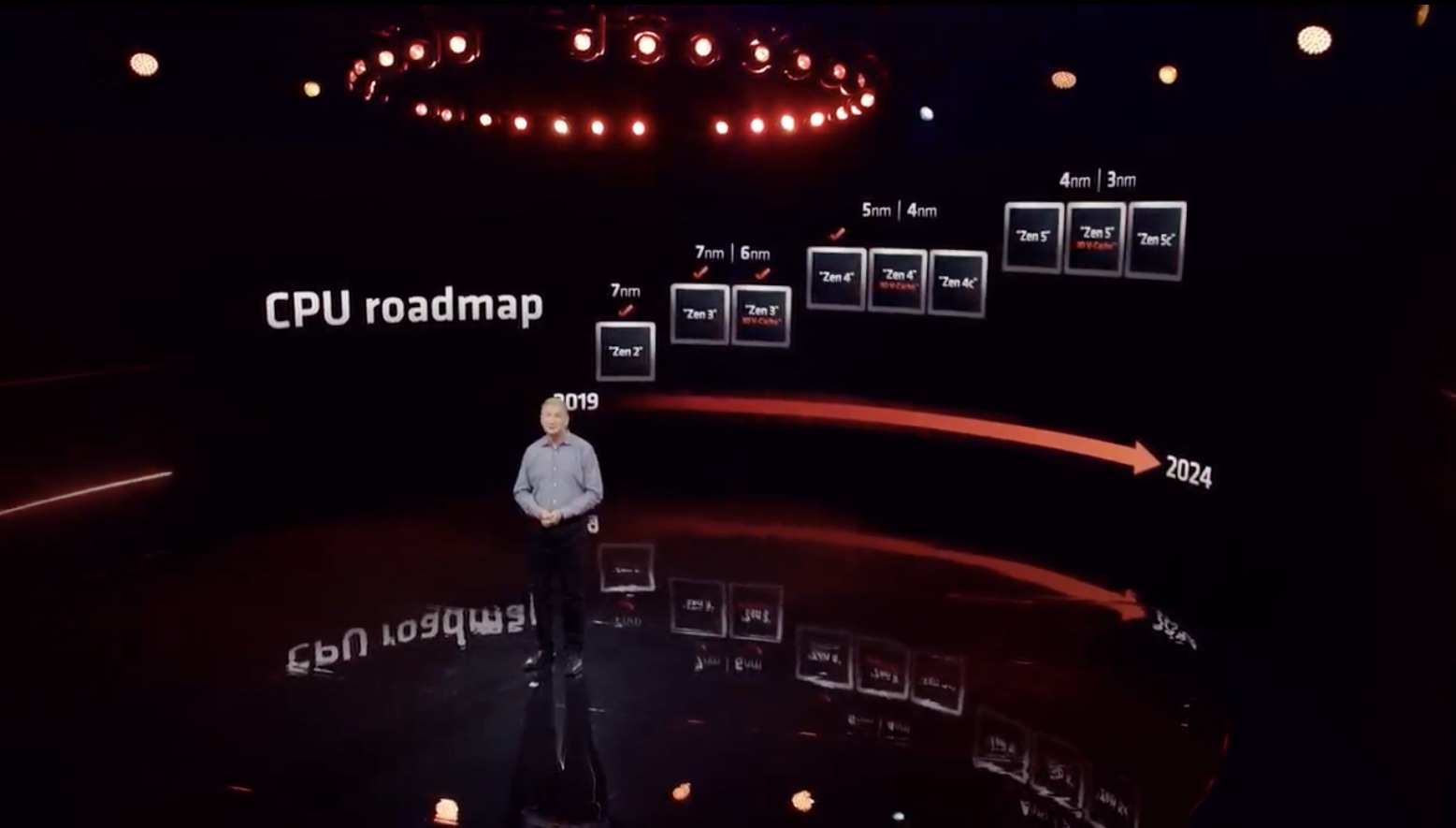
Looking ahead, succeeding Zen 5 in the future will be a 4nm/3nm with a new Zen 5 family in 2024, AMD revealed during its presentation. Zen 5 is on schedule for a 2024 release, and will be further optimized for artificial intelligence workloads.
AM5 Platform
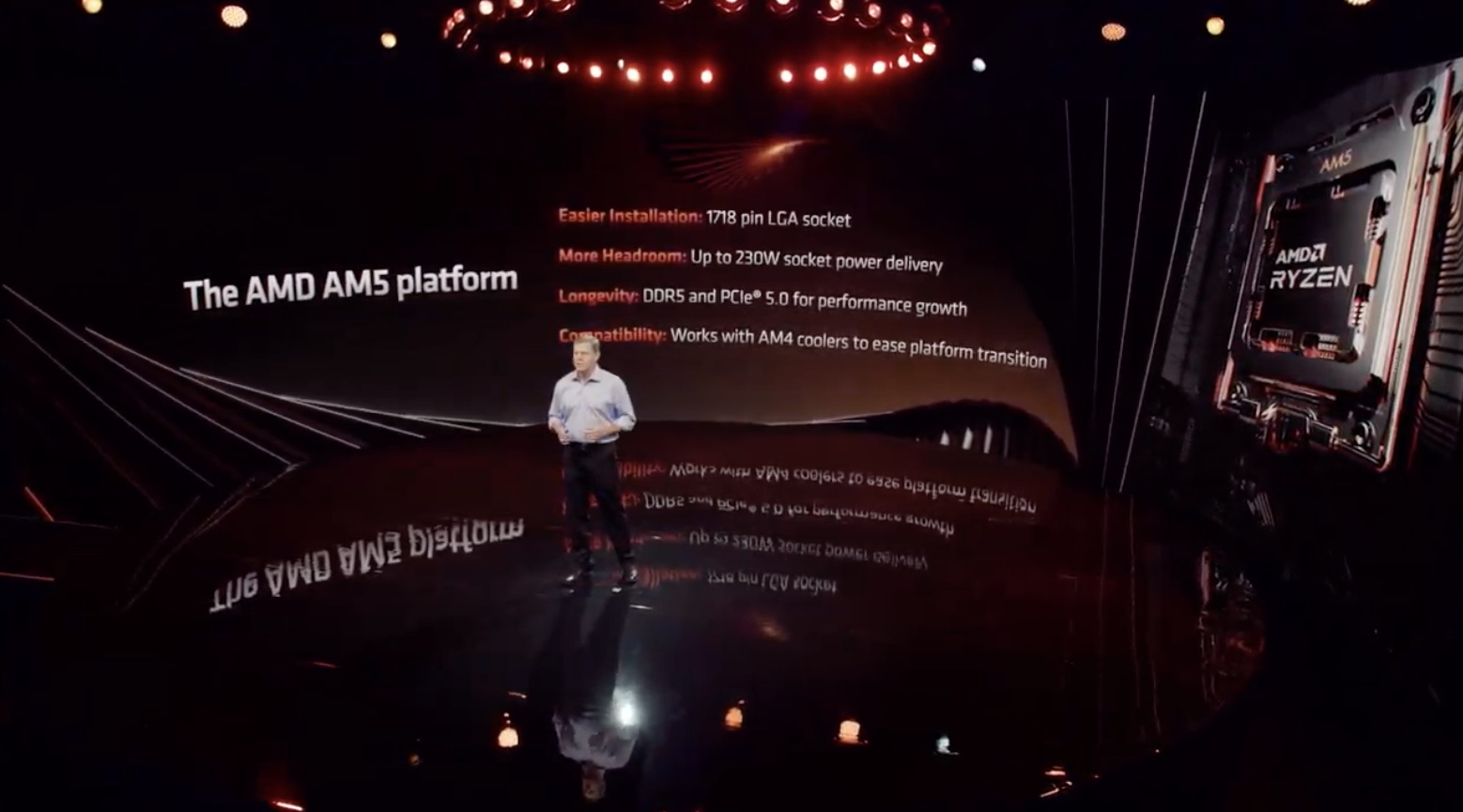
The new AM5 platform succeeds the AM4 socket. The AM5 platform starts with a 1718-pin LGA socket for easier installation. The socket power delivery has been increased to 230W to unlock more performance, AMD said, while delivering leadership in efficiency. The platform supports DDR5 and PCIe5 technologies. The AM5 also is backward compatible with AM4 coolers for maximum compatibility.
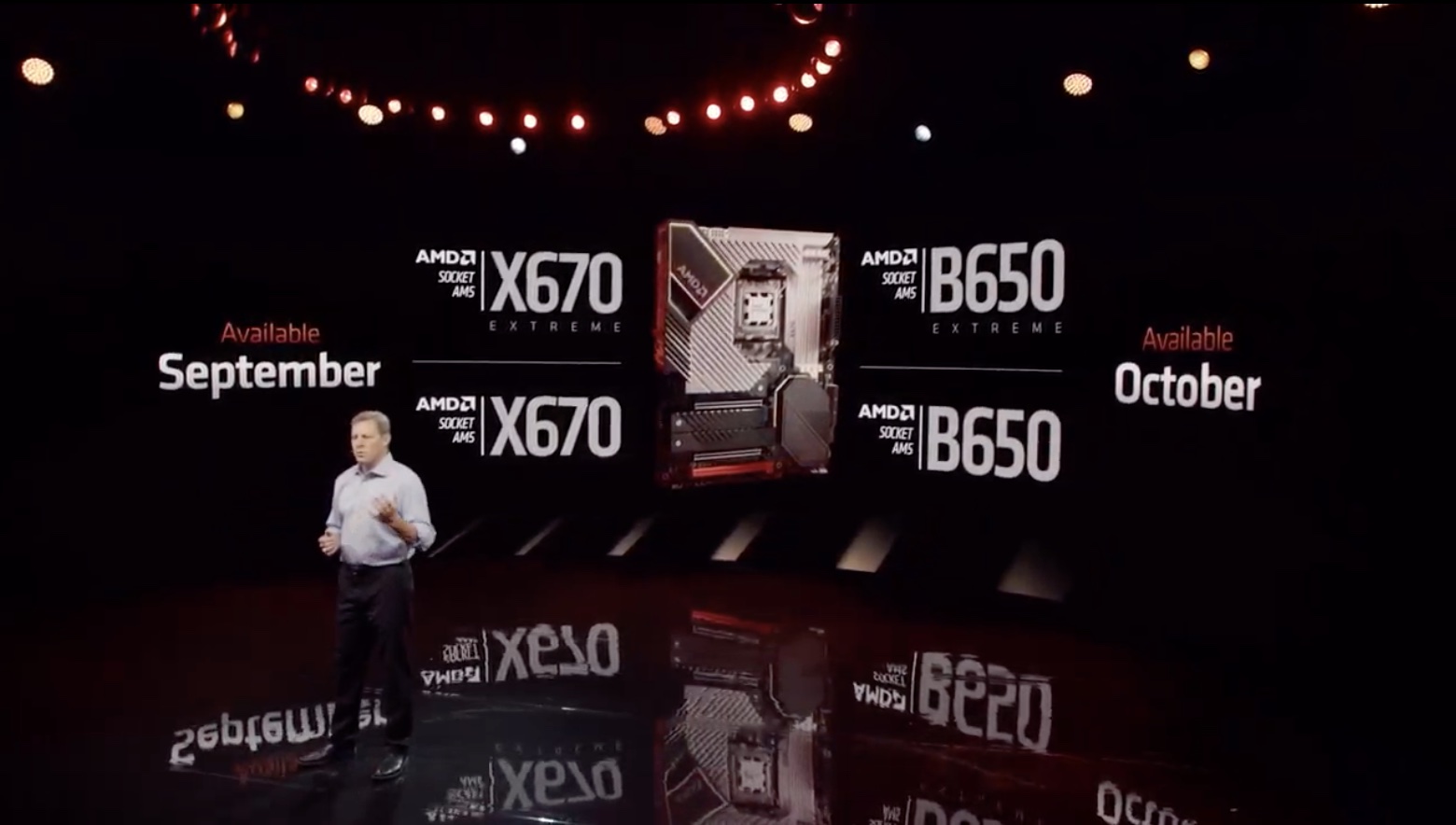
The AM5 will support X670 and B650 motherboards. The X series, arriving in September, will support the most memory. The B series will arrive in October and will be more value-driven. Motherboards start at $125, the company stated.
PCIe 5.0 support on these boards doubles the bandwidth for each lane, AMD said. In November, PCIe 5.0 storage devices will be available from a wide range of global partners, including Crucial, Micron, Phison, Asus, Corsair, Gigabyte, MSI, PNY, Seagate, and more.
The AM5 platform will use also DDR5 memory. AMD said that DDR4 has now "reached the end of its evolution," and DDR5 brings more capacity, lower latency, and high data rates. AM5 will exclusively use DDR5 memory.
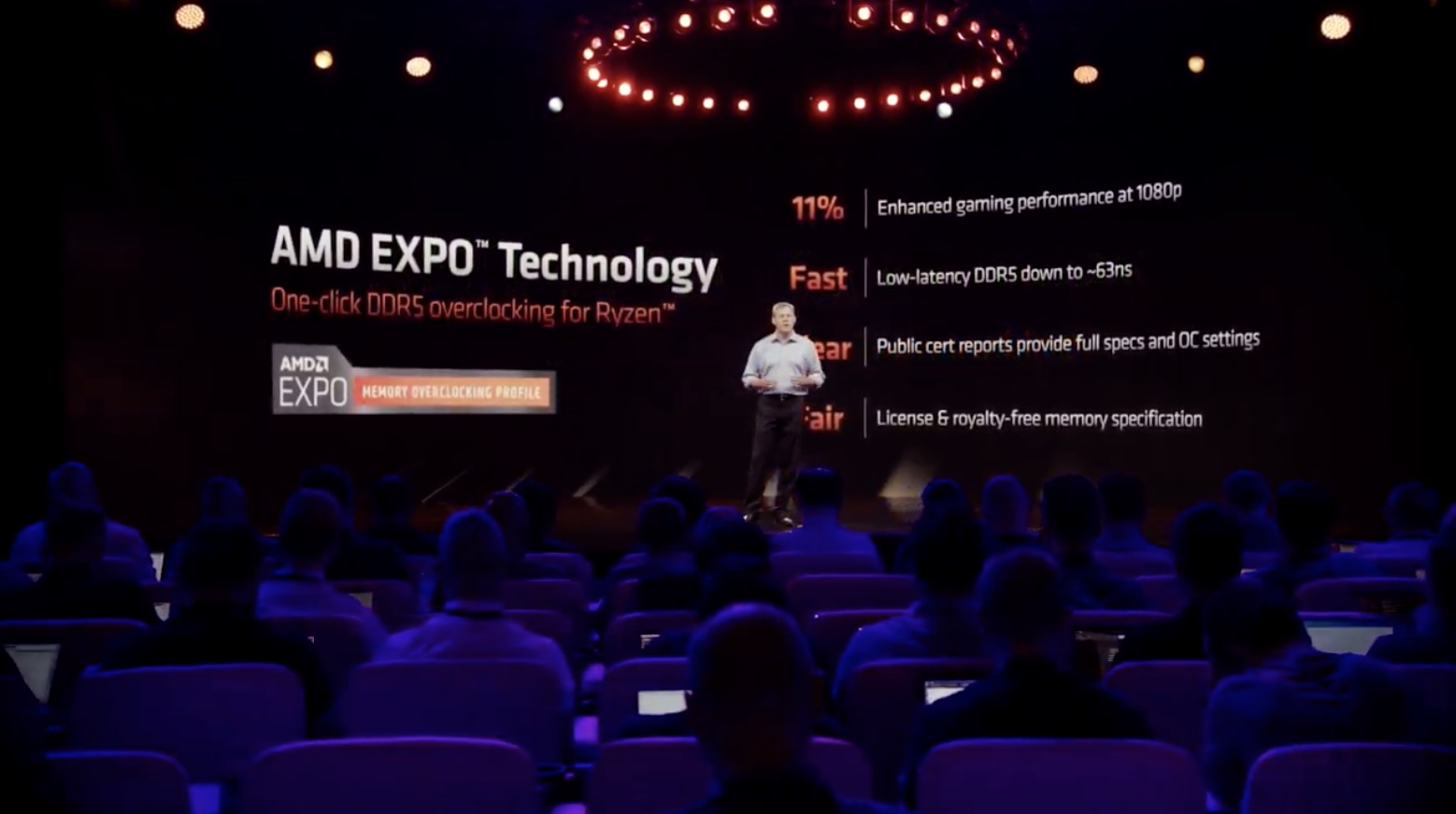
AM5 will debut with AMD EXPO memory technology for easy overclocking, which can deliver up to 11% enhanced 1080p gaming performance.
The company said that EXPO is built on clear licensing protocols and open standards. AMD expects to see more than 15 memory kits at launch that supports AMD EXPO.
With AM5, AMD stated that it is committed to supporting the platform through at least 2025.
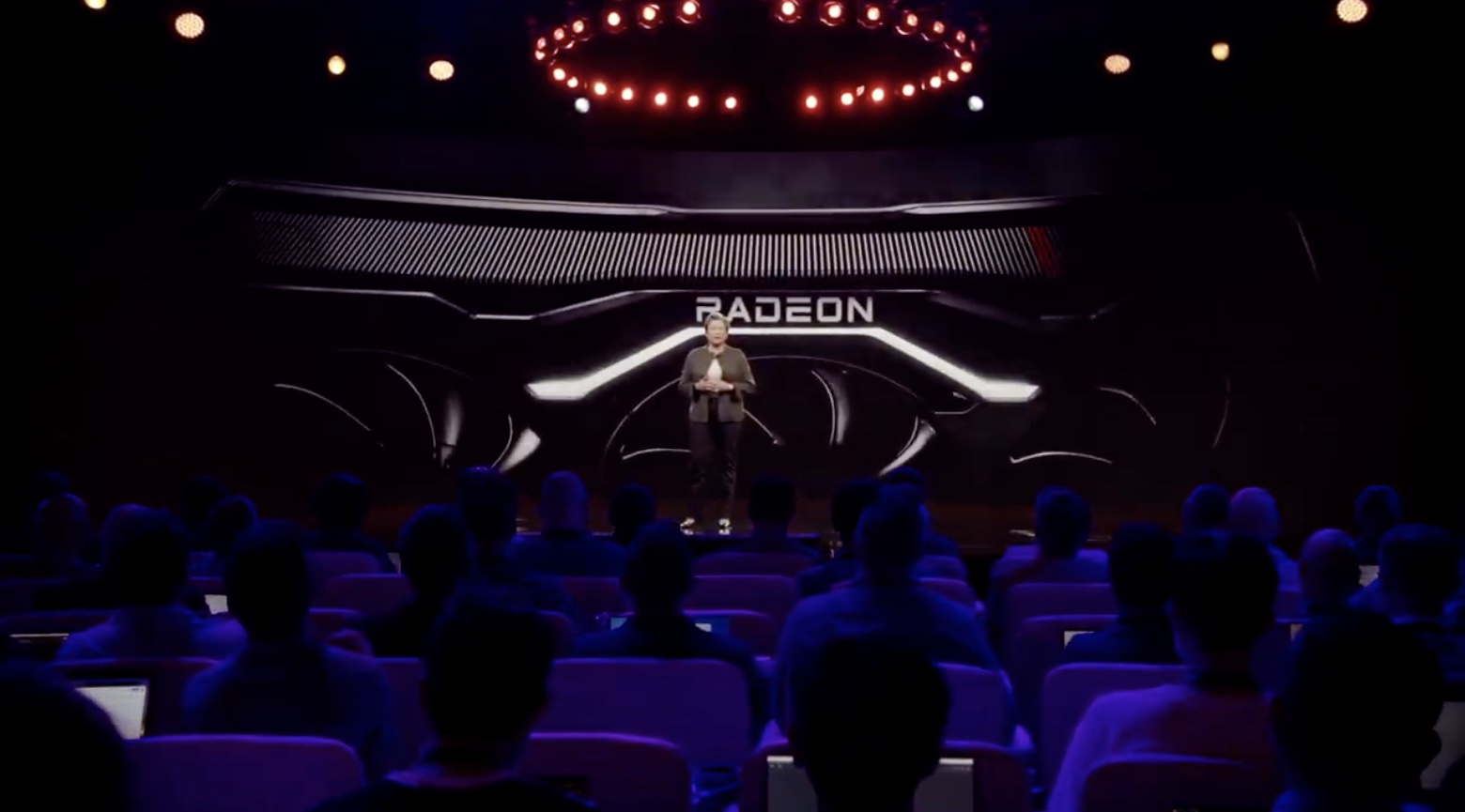
In addition to Ryzen, AMD also previewed its new RDNA 3 platform for graphics. Su said that the RDNA 3 will deliver 50% more performance per watt than the current Radeon GPUs. The RDNA 3 platform will power AMD's next-gen Radeon graphics cards.
RDNA 3 will launch later this year, according to AMD.
Chuong's passion for gadgets began with the humble PDA. Since then, he has covered a range of consumer and enterprise devices, raning from smartphones to tablets, laptops to desktops and everything in between for publications like Pocketnow, Digital Trends, Wareable, Paste Magazine, and TechRadar in the past before joining the awesome team at Windows Central. Based in the San Francisco Bay Area, when not working, he likes exploring the diverse and eclectic food scene, taking short jaunts to wine country, soaking in the sun along California's coast, consuming news, and finding new hiking trails.

